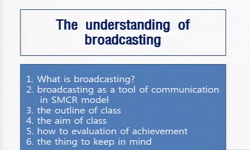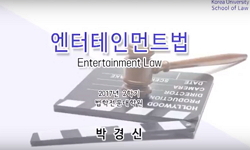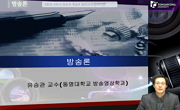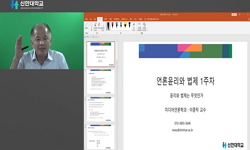This article is to review one of the Korean Supreme Court`s case about broadcast`s liability for libel by group description. A unit of policemen sued broadcast company for libel on the fact which this had broadcast the unit misuse its authority in ins...
http://chineseinput.net/에서 pinyin(병음)방식으로 중국어를 변환할 수 있습니다.
변환된 중국어를 복사하여 사용하시면 됩니다.
- 中文 을 입력하시려면 zhongwen을 입력하시고 space를누르시면됩니다.
- 北京 을 입력하시려면 beijing을 입력하시고 space를 누르시면 됩니다.

집단표시에 의한 명예훼손과 민법 제750조 -대법원 2006. 5. 12. 선고, 2004다35199 판결(공, 公2006상, 上, 1020) = Broadcast`s Liability for Libel by Group Description
한글로보기https://www.riss.kr/link?id=A99953970
- 저자
- 발행기관
- 학술지명
- 권호사항
-
발행연도
2007
-
작성언어
Korean
-
주제어
집단표시 ; 명예훼손 ; 방송보도 ; 불법행위책임 ; 상관관계설 ; group descroption ; Libel ; broadcast ; Liability for tort ; theory of interrelation
-
등재정보
KCI등재
-
자료형태
학술저널
- 발행기관 URL
-
수록면
158-180(23쪽)
- 제공처
-
0
상세조회 -
0
다운로드
부가정보
다국어 초록 (Multilingual Abstract)
This article is to review one of the Korean Supreme Court`s case about broadcast`s liability for libel by group description. A unit of policemen sued broadcast company for libel on the fact which this had broadcast the unit misuse its authority in inspecting a human traffic case of women of the streets. The broadcast was urged to have described all the members of the unit as suspects. The Supreme Court accepted the claim to order damages in the case. Group libel is an extraordinary cause of action, the elements of which according to jurisprundence used to be enumerated as ①the size of the group, ②the charater of group and the status of claimant(plaintiff) among the group, and ③whether the broadcast is directed to all or part of the group. But I think we should tell the specifiability(identity) of victims from the individual linkage between harm-causing acts and victims(`legally protected interests). In determining illegality of libel, more generally defamation, the prevailing theory of interrelation is playing a important role on the basis of adaptability and applicability; for example, however large the group size be, we do not hesitate to admit illegality on being confronted with the broadcast by which the group could incur the most serious damages. Hence, necessary ordering of various kinds of protected interest. In addition, we had better not deny libel as such in a large size of group, but admit it and take into consideration in the process of damages calculation. As lex ferenda, the active status as plaintiff could be considered to give a group under limited conditions, which has common interests in the case, but has otherwise no legal entity(a kind of class actions).
동일학술지(권/호) 다른 논문
-
- 한국경찰법학회
- 김태명 ( Tae Myeong Kim )
- 2007
- KCI등재
-
- 한국경찰법학회
- 성홍재 ( Hong Jae Seong )
- 2007
- KCI등재
-
표준권한규범(標準權限規範)과 일반권한규범(一般權限規範)의 관계(關係)에 관한 소고(小考)
- 한국경찰법학회
- 권배근 ( Bae Keun Kwon )
- 2007
- KCI등재
-
2007년 정신보건법 일부개정법률안에 대한 고찰 -강제입원절차와 경찰관 동의를 중심으로-
- 한국경찰법학회
- 문성도 ( Seong Do Mun )
- 2007
- KCI등재




 KISS
KISS






